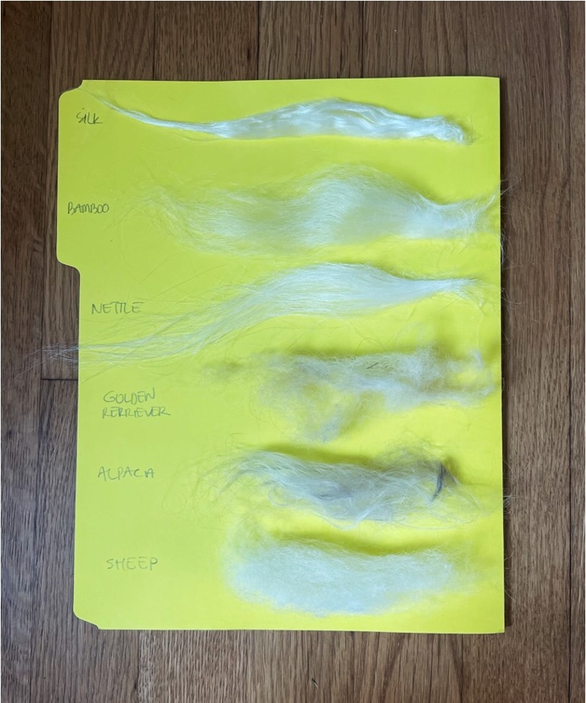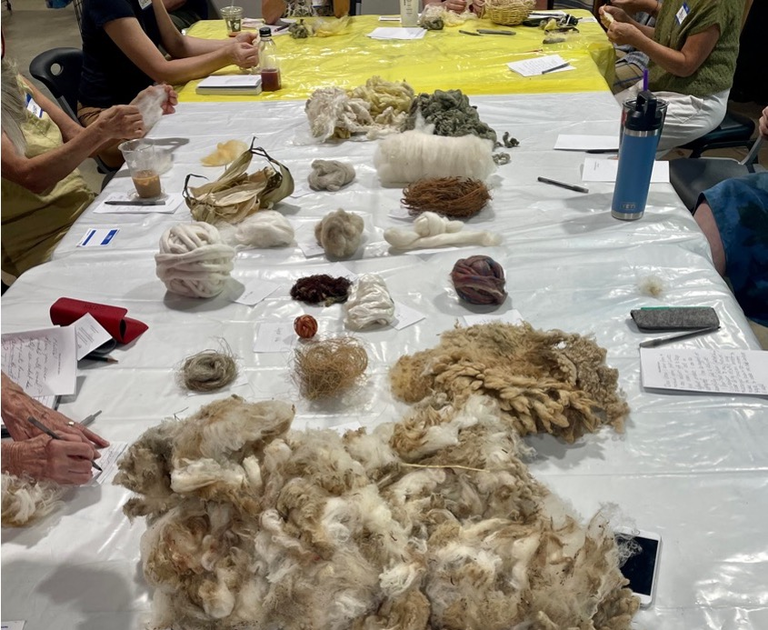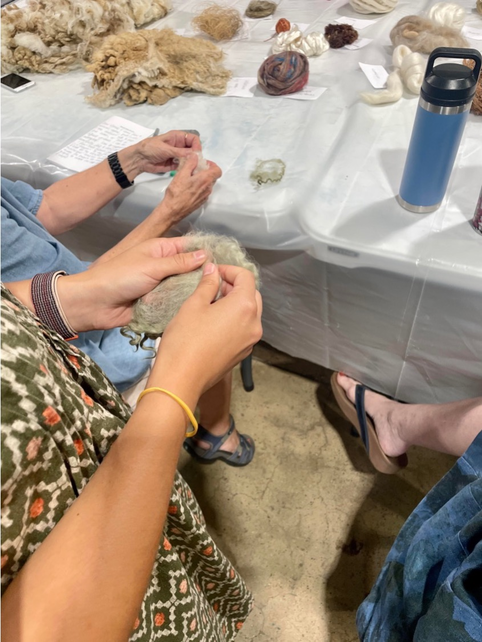Thinking about wool's future took place through artist meetings, farm visits, and readings, as mentioned in earlier chapters. Two other essential means were hands-on explorations and a focus group discussion in a workshop.
GROUP EXPLORATIONS - WORKSHOP
In the workshop, participants were invited to rethink the capacities of wool, its behaviors in creative making, and the values attributed to it. During the workshop, participants also worked with other organic fibers to explore pairing wool with other materials. The workshop aimed to rethink the future of local wool. In the workshop, through material exploration, we speculated ways of overcoming barriers and re-envisioned use areas for wool.
As part of the workshop at "Local Cloth" we worked with different kinds of wool, tried fiber combinations, and discussed the future of wool.
Artists, artisans, educators, sheep farmers, and wool enthusiasts participated in the workshop. With different stakeholders, we identified some of the key issues that create challenging situations for wool's current situation.
PERSONAL EXPLORATIONS
The idea of mixing wool with other natural fibers emerged for two reasons:
1. curiosity for wool's capacities, how it would work with and react to other fibers
2. increasing use areas by partially changing wool's tactility. Many people do not enjoy the feeling of wool touching their skin.
Key discussion points:
- The disconnection from materials
- Users and consumers
- Processing wool from fleece to an easily controllable form, such as roving or yarn
- Motivations for working with wool or engaging with crafts
- The accessibility and production capacity of wool processing facilities
NEXT CHAPTERS





